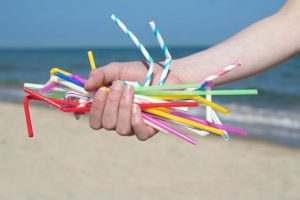Is Recycling Becoming Obsolete?
Anthony Keck
3/20/2019
You may have read an article or seen a news piece recently that points out that there is a problem with the materials that are being recycled across the country. The articles tell us that much of the materials that were being sent to China or other locations to be re-manufactured for use again are being rejected due to contamination or because there is no market for the recycled materials. Much of what has been collected for recycling is not being used. It begins to sound as if there is no reason to recycle. That is not the case at all.
It’s true that markets drive the recycling process as much as the desire to reduce trash to improve our environment. The message to recycle is getting out there and more communities are requiring us to recycle. This increases the supply of materials that are recycled, and just like every other commodity market, the price of the “finished” product is going down when the supply goes up. That means the recycling plants are being compensated less, and those plants have to respond in order to stay in business.
Consumers drive markets. How can we as consumers improve the market for recycled materials? Properly sorting the materials that can be recycled is something everyone can do. Put only those items that can be recycled in the bins. Otherwise, the materials are contaminated from the start. READ: NO PLASTIC BAGS.
The materials need to be “cleaner” to reduce the contamination of the recycled materials. Less contamination means better raw recycled materials for the next useful life of the paper, plastic or metal. No greasy paper or cardboard. No plastic film attached to cardboard (tissue boxes for example; just pull to plastic off, it’s easy). Rinse out food, soap and other liquids from jars, cans and plastic containers. Put the lids back on, even on water bottles. It reduces cross contamination with a paper.
Only plastics shown on the lids of the recycle bins should be recycled. Sure we get all types of plastics, and they all have one of those triangle symbols on the bottom with a number. Just look at the lid on the recycling bin and you will see if it is a plastic that can be used in recycling. If it doesn’t, you will be contaminating your recycling. The markets for plastics change frequently, and it causes confusion. The GreenSalem site provides detailed information about materials you can recycle curbside, as well as what to do with other materials like e-waste, compost and bulk items. While none of us can control the markets for recycled materials, we can make the materials more desirable to the recycling companies by recycling properly.
Many of the recent doom and gloom articles fail to provide the real solution to our recycling problems: Reduce and refuse to use all materials as much as you can. Yes, consider what you buy and how you order products. This runs head-on to the way most consumers think. We want to purchase things and we want convenience.
You can take action to achieve the goal of reduction of trash and waste. Just because a plastic bottle can be recycled doesn’t mean that it will always be recycled. Stop buying and using bottled water for most of your consumption. Re-usable water bottles can sate your consumer urges. Consider how the products you purchase are packaged. If you find that the materials used for the packages are not recyclable, let the product producer know your thoughts. It can make a difference if producers hear that their consumers want a change made.
The path consumable materials take should first start with the question: Do I need this? Reducing your consumption to the things you need and will actually use will result in less waste. Next, what do I do once I have used the items? Ask if it can be used again, perhaps differently, but get more out of it. You paid for it, so use it up. Is it something that can be re-purposed, or used differently than what you bought it for? There are plenty of online sites that show different ways to use something before tossing it, particularly packaging materials.
Something else you can do is to refuse to accept the item. Polystyrene materials should be avoided whenever you can. Of course you will find that triangle symbol on most of those products, but the truth is that very few places are able to recycle such materials. It’s best to avoid the items, and they cannot be recycled curbside, EVER. Plastic bags are also something to avoid. Most grocery stores will take plastic film for recycling, but they cannot be recycled curbside, EVER. Reusable bags are available, and you can always bring your own paper bags when you shop. I hear you, one more thing to remember, so keep some in your trunk.
The recycling path begins with Reducing your consumption, then Reusing the materials, then Repairing the items when possible, then Re-purposing the items into something else you can use, and then when you have gotten as much as you can out of, Recycle it.
Reduce/Reuse/Repair/Re-purpose/Recycle.
Will plastic straws break the World’s back?
January 2019
 One of the hottest topics in the Green World is the amazing amount of plastics showing up in our oceans, lakes, rivers, streets, sidewalks, yards, fields and, well, everywhere, even in our food.
One of the hottest topics in the Green World is the amazing amount of plastics showing up in our oceans, lakes, rivers, streets, sidewalks, yards, fields and, well, everywhere, even in our food.
You’ve read about the giant mass of plastic floating in the Pacific Ocean. Perhaps you’ve seen the stories about the machines being used to harvest the plastic that has made its way into the seas around the globe. To combat this assault of plastic, there are plastic bag bans, efforts to reduce plastic packaging, and a great deal of consideration given to develop effective ways to keep plastics out of our water. This is a problem that begs to be solved, but there is no single solution to this, short of prohibiting plastic production. That is not a practical solution in our world today. Plastic can be effective, useful, and appropriate for many uses. It is durable and economical. Plastic can also be destructive, poisonous, and wasteful, and it takes decades and longer to decompose.
Consider the straw. Not the stalk left over from the wheat harvest. That straw has many uses, including plant bedding, animal habitats, drainage barriers, and even the quaint little pig’s house. That straw is also biodegradable. The other straw…the type used for consuming liquids, is most often made of plastic.
Plastic straws do not biodegrade for many, many years, if ever. They are not recyclable. They are not reusable. They are not adaptable after being used. The more straws that are used, the more straws are produced. Each day millions of straws are distributed routinely in this country. They are in nearly every restaurant glass, stuck on every juice box, at every drinking establishment you can think of. We get them when we order ice tea, milk, juice, cocktails, water, and shakes. The more straws used, the more plastic waste is created.
Would banning straws be practical and appropriate? Straws are useful, even helpful at times. It can be the only way some people can drink liquids. Children often are given straws because they have difficulty holding a beverage without spilling it. Many people need a straw to be able to drink due to their limitations. Banning straws entirely is not something that will actually work to resolve the plastic straw waste.
What can be done to change this? Big problems are solved by making the decision to take the first step. Here is a simple first step for most people to take: Don’t use a straw. If you don’t need to use a straw, don’t take a straw. If you are ordering a beverage, even water, ask the server to hold the straw when you give your order.
Did you know that when a server brings an item to the table for consumption and it is not used, the item is required to be tossed out for health regulation reasons? Keep that in mind when you order a beverage next time.
Your second step is to encourage another person to do the same. Before long, more and more people will be declining to take a straw, and the places that serve beverages won’t need to have as many plastic straws to hand out. That will mean less plastic trash that can’t be recycled. When that starts trending, the once big problem will be getting smaller and smaller.
If you do need a straw, ask the server if a paper straw is available. Paper straws do biodegrade. If you need straws at your home, consider buying paper straws instead of plastic. You are the consumer. You are the person who can drive this change. Other alternatives to plastic straws are glass and metal. Both can be washed in a dishwasher, and you can find brushes to clean them at most home-goods stores.
Consider asking the staff at the places you purchase your beverages to change the way they serve you by asking you if you want a straw rather than just giving one out with every beverage. If you are at an establishment that takes this approach, commend them with a compliment. Who doesn’t appreciate a compliment and you are encouraging Green Behavior.
Be a wise consumer and you can be a good steward to our Earth. Refuse a straw. Reuse a glass or metal straw. Reduce the number of straws you use. Replace them with papers straws. All of these actions will reduce the accumulation of non-biodegradable plastic and make it easier on all of our creatures and resources on our planet

